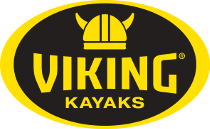When kayak fishing I wouldn't be without my...
5:10PM 19th Mar 14
This article on preparing your priority gear for a big trip was written for the NZ Fishing news in May 2012 by Stephen Tapp, some good tips for all that think they may have ticked all the boxes on the gear check list.
Stephens article begins: I’m in the middle of getting all my kit together for a far North kayaking expedition; I have equipment checks under way, gear lists to sort through, and tackle to accumulate. Everything is sitting in one big well organized heap (as Tui succinctly put it: Yea Right…!) when a bright spark wandered past and asked “so what can you leave behind?” The none-too subtle reference to the size of the mountain in the middle of the floor, and a purely coincidental thread on a kayaking forum (thanks Mental, “Et tu, Brute?”), had me thinking about just which were my most critical accessories.
I’m not talking about essential safety equipment; that’s a non-compromise area I would struggle to rank for importance. Also, I’m not considering items like leashes and anchoring system that I consider essential to being able to kayak fish efficiently. What I’m looking at here is the rest of the equipment I manage to wedge onto my kayak, what’s the most important, and are there any items I would miss severely if they weren’t there?
Here are my top 7 non-essential “must have” items. These are the ones that would severely hamper my fun if I left them behind on any expedition:
This is a piece of equipment that goes right back to my earliest salt water kayak fishing days. I had the good fortune to get amongst monster Northland moochers almost from the first baits in the water. I was suddenly confronted with trying to get heavy fish into the rear well of my Swing, and have them stay there regardless of conditions.
As an avid freediver and spearo it was a natural extension to pioneer the use of fish stringers for securing catches on kayaks. As the system improved and simplified it didn’t take long to discover how valuable the fish stringer could be in managing your catch in the cockpit, at the side of the kayak, and for assisting in getting bigger fish into the rear well (the Swing had a longish rear deck between the seat and the rear well, making it a reach getting fish into the back).
Over the years I’ve developed the habit of using my fish stringer to let me work with my catch at the side of the kayak without having to bring it into the cockpit. This has greatly reduced the risk of being spined, bitten, or nailed by any spare hooks not imbedded in my catch. Now, the only time I bring fish straight on board is when targeting tuna (you never know when there’s something lurking around to snatch your catch) or when needing a photo.
Buy your fishstringer here Fish Stringer
2. Sounder
Forgetting my fish finder is one of the few times I’ll consider suffering the loss of valuable fishing time and heading for home to collect it. In the early days I used to be content with sneaking around known marks (or new ones spotted from high ground while on landbased excursions) and stopping to anchor and berley the fish to me. With all the paddling involved in getting to and from these areas I knew I had to be passing over equally productive spots, but had no way of knowing for sure.
As a result my first sounder had a dramatic impact on my paddling and fishing; suddenly in some areas I was covering only a fraction of the distances and catching bigger and bigger fish. Case in point is the fishing I was doing in the Bay of Islands. Instead of heading straight out to classic locations like Red Head and Whale Rock, or paddling all the way to Cape Brett, I was boating and releasing multiple 8 – 10kg fish only minutes from my launching spots. These fish were all coming from small spots boaties ignored (because it’s too easy to put the throttle down and head for the horizon) but you absolutely needed a sounder to locate.
Now it’s gone full circle and I’m back paddling for the horizon, but I’m using my sounder too. Nearly all of my current crop of prime fishing locations have come from watching the sounder closely. Weather I’m trolling lures for pelagics or simply heading for some distant location, any bump or bit of structure is noted no matter how small. Some of the best spots are no larger than a couple of coffee tables pushed together, yet they produce fantastic fishing time and again!
for a full selection of sounders see here - Sounders
3. BCD Knife
This is the little yellow knife that resides on the front of my PFD. Though it does have a safety role as backup to my larger freedive knife on my leg, its primary role is as a utility blade and Iki Jime tool. It has become indispensable simply because it’s so convenient, ready at hand, and is ALWAYS there.
Having it on the front left of my PFD makes it easy to locate and grasp with my right hand when dealing with big fish. The shorter blade also makes it safer to use than my larger/longer knife when dispatching fish. One very important point is that by using this smaller BCD knife as my utility tool, my freedive knife stays razor sharp and ready for use in an emergency!
4. Sun Glasses
These have definitely become a “no compromise” item and leaving them in the vehicle on a pre-dawn start will trigger an automatic return to the beach to get them. They’re so important I always carry spares in the vehicle. Our high UV levels create plenty of glare, even on cloudy days, and there’s always the very real risk of the kayakers equivalent of snow blindness creating damage because we sit so close to the water.
I’ve dried many different types of fishing glasses for kayaking and have decided the following features are critical to my needs:
Broad spectrum UV protection – obviously I don’t want to suffer any damage
Polarizing – greatly reduces glare and allows me to see my catch during the last stages of the battle at the side of the kayak.
Polycarbonate lenses – these are 20 times more impact resistant and 3 times lighter than glass while still allowing excellent clarity of vision. Most of the better quality lenses have a scratch resistant coating to improve durability.
Hydrophobic coating on both lens surfaces – repels water and fogs less when paddling hard for a clearer field of view.
Semi-rimmed design – I’ve fallen in love with frames that don’t have a bottom rim on the lenses. This eliminates the buildup of salt as drips run down the lenses and drop off the bottom of the glasses. It also makes it much easier to give your sunnies a squirt of water from your drink bottle to clear them of crusted salt on heavy wind days without wiping them and risking scratched lenses.
Not a lot needs to be said here. I grew up with the adage “if you’re not going to eat it, don’t kill it”. If you’re bringing catch home you need to keep it in good order. Insulated covers give fast easy access to the rear well in rough conditions, and allow easy transport of larger or longer fish like big kings. Fully insulated bags are affordable and give better insulation. For those doing lots of surf transitions they’re also better at keeping your catch retained of you turtle in the waves. Chill-Pod’s provide the ultimate in catch storage and minimize any fishy leakage while on the water or when transporting your catch home.
For a comprehensive offering of fish storage options see here - Insulated Fish Storage
6. Seat Cushion
I must be getting old, but this is one item that’s unashamedly about comfort. I’ve served my apprenticeship in the numb butt department and my seat cushion is now a constant companion on the water. It’s warm during the cold winter months and truly makes the difference between a fun and enjoyable day on the water, and one that becomes a trial that has you asking why you took up this crazy sport in the first place!
Buy your seat cushion here - Seat Cushion
Yes, I know a paddle is essential and possibly shouldn’t be on this list, but in this case I’m talking about upgrading from your average “armstrong outboard” to something a whole lot better. I would find it difficult to be without my incredibly light, diabolically rigid, fully adjustable piece of hi-tech carbon fiber. This non-essential upgrade greatly improves performance and efficiency, but the gain I find most significant is the reduction in weight. Most good quality glass shaft paddles weigh just over 1kg, the paddle I’m currently using comes in under 700g without compromising robustness and reliability.
My average kayak fishing session throughout the year sees me cover up to 30km for the day, further if I’m chasing tuna or plumbing the depths for puka. Since I roughly average a meter per paddle stroke that’s going to mean somewhere between 20,000 – 30,000 paddle strokes each trip; a daunting though so baldly stated! Based on that very simple piece of mathematics I have no problem justifying the extra cost. Grams definitely do count, and a 30% weight reduction is always going to be significant!
See our Propelz Carbon Paddle here - Lightweight Carbon Paddle





